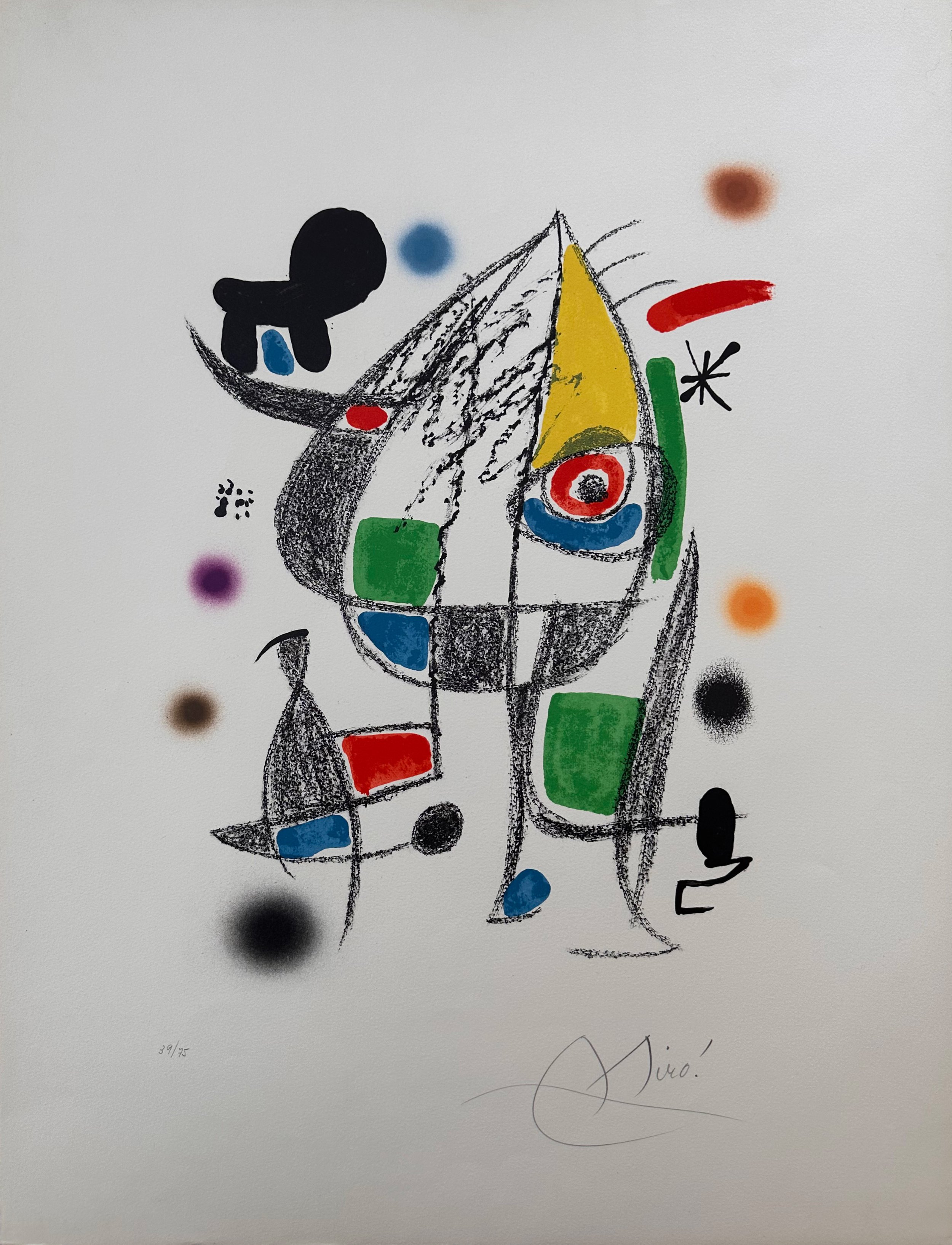Joan Miró
A pivotal figure in 20th century avant-garde painting, Barcelona born artist Joan Miró (1893-1983) created a unique innovatory style rooted in memory, imaginative fantasy, and the irrational. Boasting an early portfolio heavily influenced by Fauvism, Cubism, and the folkloric Catalan art of his heritage, Miró created works that are distinguished by their juxtaposition of brilliant pure colors against flat neutral backgrounds. The artist’s signature abstract amoebic shapes are contrasted against sharp lines to create visions that are often whimsical and ethereal, resulting in their significant contribution to the Surrealist movement. Throughout his career, Miró experimented with various media, including etchings, lithographs, ceramics, sculpture, and tapestries.
The artist held his first solo exhibition in 1918 at José Dalmau’s gallery in Barcelona. Shortly afterwards, he made his first trip to Paris in 1920, where he was introduced to Pablo Picasso, André Breton, and other emerging artists of the time. It was during this time that Joan Miró aligned with the Breton led Surrealist movement. Although his future work was influenced by the tenets of Surrealism, the artist never fully accepted the movement’s creed, instead remaining on its periphery. Despite this rejection of the movement, Breton later described Miró as “the most Surrealist of us all.” In contrast to his art, Miró’s personality was orderly, detail-oriented, and meticulous.
Born in Spain, in 1893 as the son of a goldsmith and a jewelry maker, Miró displayed an early aptitude and passion for art in contempt of his parents’ discouragement. At the age of 14, Miró attended Fine Arts and Business school at La Lonja’s School of Fine Arts in Barcelona. After three years of studies, Miró followed his parents’ wishes, taking a job as an accountant, in which he later suffered a nervous breakdown. After his recovery, he abandoned his business career to re-commit himself to his art studies, enrolling at Francesco Gali’s Escola d’Art in Barcelona. Miró settled in 1956 in a villa in Palma de Majorca, Spain, which was later transformed into the beloved Miró Museum. Though the artist died at age 90, his iconic works are displayed today in such collections as the Art Institute of Chicago, The Museum of Modern Art, and the Tate Gallery in London.
© Ernst Scheidegger




